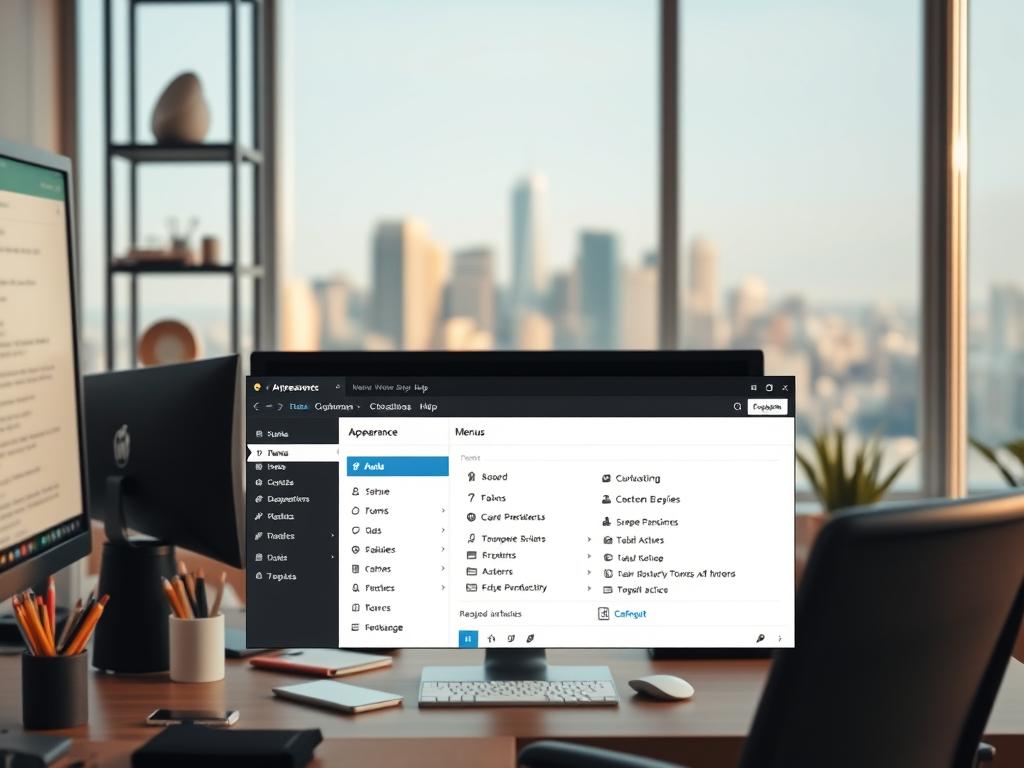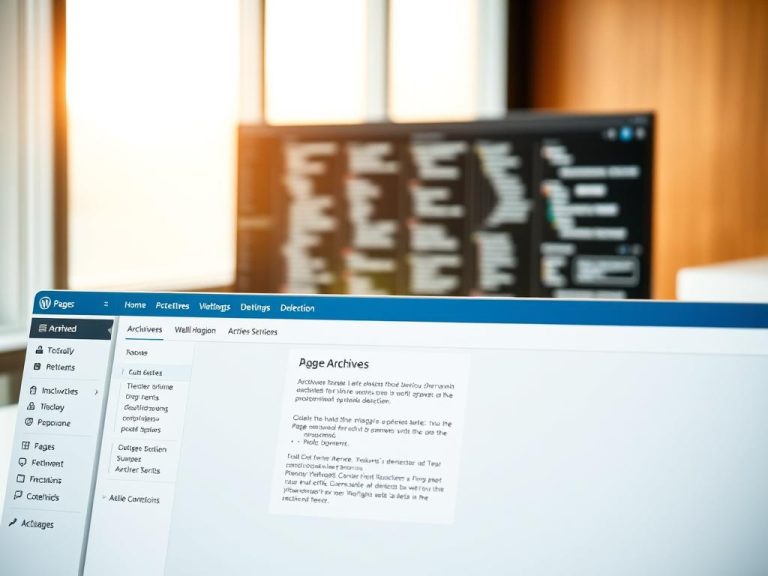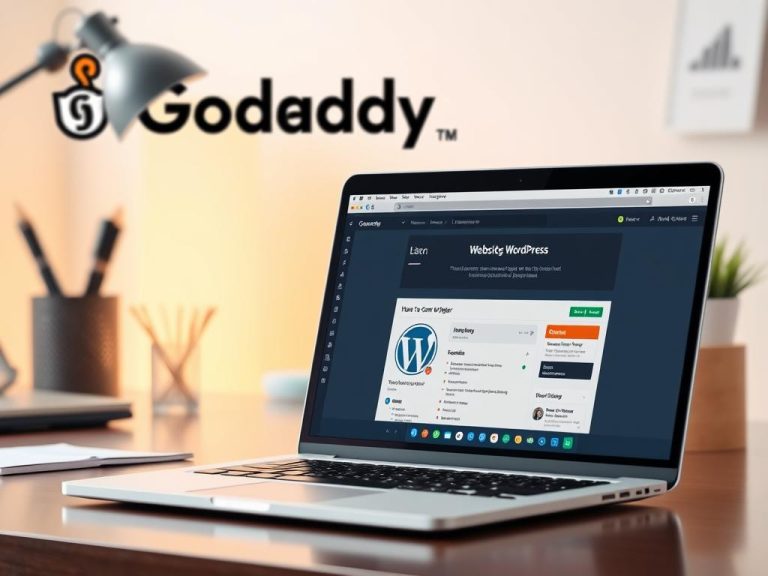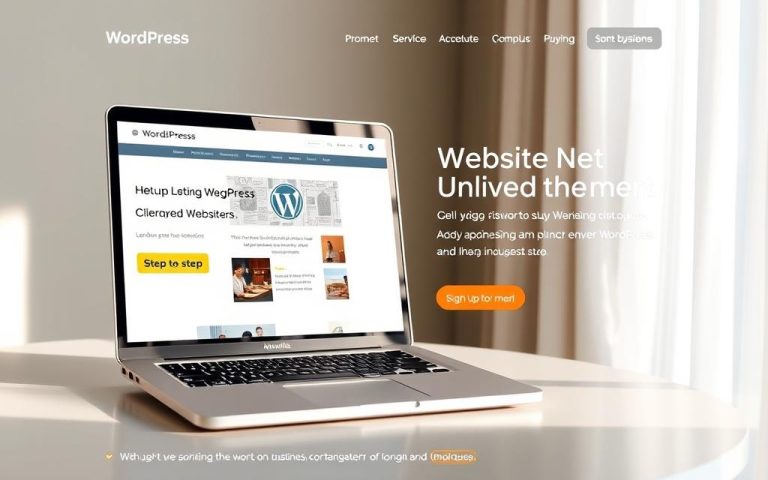How to Add a New Tab in WordPress Menus & Pages
Effective website navigation is vital for user engagement. WordPress menu customisation offers tools to boost your site’s user experience. Most users prefer external links to open in new tabs.
Web designers value thoughtful link management. Many suggest opening external links in new tabs. This keeps users connected to your main content whilst allowing smooth exploration.
WordPress powers a large portion of websites globally. Menu customisation is a crucial skill for site owners. Most WordPress users value link behaviour customisation.
The aim is to create user-friendly navigation. Strategic new tab options can reduce bounce rates. Users appreciate websites that anticipate their browsing needs.
Learning to add new tabs will boost your site’s performance. It will also increase user engagement. Our guide will help you optimise your website’s navigation experience.
Understanding WordPress Navigation Menus and Their Importance
WordPress navigation menus guide visitors through your website’s content. They’re vital tools for enhancing user experience and organising your site. These strategic link collections are powerful, not just decorative.
Well-structured WordPress navigation menus have a significant impact. Research shows their importance for user engagement and retention.
- 30% of website visitors leave due to poor navigation
- Well-designed menus can improve user engagement by up to 50%
- 70% of users prefer multi-level dropdown menus
Key Benefits of Intelligent Menu Design
A strategic menu structure offers many advantages for website owners. Smart WordPress navigation strategies can boost user interaction and retention. They make your site more user-friendly and engaging.
| Menu Feature | User Benefit | Engagement Impact |
|---|---|---|
| Clear Hierarchy | Easy Information Access | 50% Higher Retention |
| Dropdown Submenus | Simplified Navigation | 70% Improved Usability |
| Logical Grouping | Reduced Cognitive Load | 25% More User Engagement |
Strategic Menu Placement Options
Menu structure importance goes beyond content organisation. About 70% of users expect primary navigation at the top of the webpage. This makes placement crucial for an intuitive user experience.
Impact on Digital Experience
A well-crafted navigation menu can transform user interaction. Websites with clear navigation structures reduce bounce rates by up to 30%. This shows how menu design greatly influences digital engagement.
Why Opening Links in New Tabs Matters

Thoughtful navigation design is key to enhancing user experience. Opening links in new tabs keeps visitors engaged with your WordPress website. This approach can greatly impact how users interact with your content.
Strategic link management offers several benefits. It preserves current page context and reduces navigation friction. It also encourages deeper content exploration.
- Preserves current page context
- Reduces navigation friction
- Encourages deeper content exploration
Web designers often use new tabs to create smoother browsing experiences. This technique works well for external links and supplementary content. It’s particularly useful for resources like WordPress image slider tutorials.
Intelligent link management transforms user navigation from a potential obstacle into a seamless journey.
Research shows 70% of users have mixed views on new tab interactions. Some like exploring multiple pages simultaneously. Others find it disruptive. The key is to implement this strategy wisely.
Accessibility is crucial when using new tab strategies. Guidelines recommend clear visual indicators for links opening in new tabs. This ensures all users understand the navigation behaviour.
How to Add New Tab in WordPress
Creating tabs in WordPress can improve your website’s navigation. It’s a simple process within the WordPress dashboard. Let’s explore how to add new tabs effectively.
Configuring your WordPress site’s navigation requires precision. You’ll need to access and modify menu settings. Understanding this process is key to success.
Accessing WordPress Dashboard
First, log into your WordPress admin area. Then, follow these steps in the left sidebar menu:
- Click on Appearance
- Select Menus
- Locate the top right corner
Enabling Screen Options
Screen options offer more configuration choices for your dashboard. To access these settings:
- Click the Screen Options button
- Expand the dropdown menu
- Select desired menu item settings
Configuring Link Target Settings
When adding new tabs, link target settings are crucial. They control how links open in your website’s navigation.
| Link Target Option | Behaviour |
|---|---|
| Same Window | Replaces current page |
| New Tab | Opens in separate browser tab |
Pro tip: Always consider user experience when deciding link target settings.
These steps will help you add new tabs in WordPress. You’ll be able to configure link targets easily. Your website’s navigation will improve, enhancing user interaction.
Customising Menu Items with the Site Editor
WordPress Site Editor offers powerful menu customisation capabilities. Users can transform their site’s navigation with intuitive tools. These tools provide exceptional design flexibility.
The Site Editor enables advanced menu management through several key features:
- Full navigation block settings
- Real-time preview options
- Advanced design controls
- Responsive mobile menu configurations
To access menu customisation, go to Appearance → Editor. This interface allows comprehensive modifications of menu structures. You can also adjust visual presentations here.
Advanced users can leverage additional customisation techniques:
- Apply custom CSS classes to individual menu items
- Create nested menu structures
- Design responsive overlay menus
- Implement strategic link configurations
Compatibility is crucial for using the Site Editor. Ensure your WordPress version is 5.9 or higher. You’ll also need a compatible theme.
| Customisation Feature | Availability |
|---|---|
| CSS Class Application | Premium/Business Plans |
| Overlay Menu Design | Site Editor Themes |
| Advanced Navigation Settings | WordPress 5.9+ |
Best Practices for External and Internal Links
WordPress link management requires a strategic approach. Effective external and internal link strategies can boost your website’s user experience and search engine performance.

Mastering links can transform your website’s navigation and SEO potential. Different linking techniques serve unique purposes in your content strategy.
When to Use New Tabs for External Content
Opening external links in new tabs can keep your website accessible. Consider these scenarios:
- Referencing authoritative sources
- Sharing supplementary research materials
- Linking to partner websites or resources
Opening external links in new tabs can increase user retention by up to 15%. This method keeps users on your site while they explore additional content.
Internal Link Management Strategy
An effective internal link strategy helps users navigate your website seamlessly. Key considerations include:
- Create logical content connections
- Use descriptive anchor text
- Maintain a clear site hierarchy
Internal links are crucial for SEO. They help search engines understand your website’s structure. Well-implemented internal linking can improve search rankings and user engagement.
User Experience Considerations
Balancing link management requires attention to user expectations. Create intuitive navigation that guides visitors through your content naturally.
The goal is to make website navigation feel effortless and engaging.
Thoughtful external link management and a strong internal link strategy can enhance your WordPress website. These practices create a more compelling and user-friendly experience for your visitors.
Troubleshooting Common Menu Issues
WordPress menu problems can be tricky for website admins. Users often face visibility issues when switching between theme types. Plugin conflicts and user role restrictions can also cause navigation troubles.
Start by checking for system-wide issues when fixing WordPress menus. Deactivate plugins one by one to find the culprit. Block themes have changed menu interfaces, which may limit options for classic editing users.
Mobile-friendly menus are crucial, as half of internet traffic comes from mobile devices. Unresponsive menus often result from JavaScript conflicts or outdated themes. Testing on various devices helps solve these menu issues effectively.
Regular technical maintenance prevents menu problems. Check file permissions, database integrity, and caching systems often. This proactive approach helps create smooth, user-friendly menu experiences.
FAQ
What are the primary benefits of adding new tabs in WordPress menus?
New tabs in WordPress menus boost website navigation and user experience. They let visitors explore content without losing context. This approach reduces bounce rates and increases user engagement.
How do I open a link in a new tab in WordPress?
Go to the WordPress dashboard and navigate to Appearance > Menus. Select the menu item you want to change. Look for the Link Target option.
Check the box that says “Open link in a new tab”. Or select “_blank” in the target settings. This ensures the link opens in a new browser tab.
Are there any considerations when using new tabs for external links?
Consider the user experience when using new tabs for external links. It’s often best to open external links in new tabs. This keeps users on your original site.
Be careful not to overuse this feature. Too many new tabs can disrupt the user’s browsing experience.
Can I manage new tabs using the WordPress Site Editor?
Yes, the WordPress Site Editor offers advanced menu customisation options. Access it through Appearance > Editor to modify menu item properties. This method provides more design flexibility than traditional menu management.
What are the potential drawbacks of opening links in new tabs?
Opening links in new tabs can lead to browser clutter. It might confuse less tech-savvy users and disrupt natural browsing flow. Use this feature wisely and clearly indicate when links open in new tabs.
How do I ensure my menu navigation is mobile-responsive?
Choose a responsive WordPress theme and test your menu on various device sizes. Use the WordPress customiser to adjust menu settings. Implement responsive design principles for menus to adapt to smaller screens.
What should I do if menu items are not appearing correctly?
Check theme compatibility and clear your browser cache. Ensure menu items are published and no plugins interfere with menu rendering. Try switching to a default WordPress theme to identify theme-related issues.
How can I improve overall website navigation?
Create a logical menu structure with clear, descriptive labels. Limit the number of menu items and use dropdown menus for complex sites. Ensure consistent navigation across all pages.
Focus on user experience. Make it easy for visitors to find information quickly.














